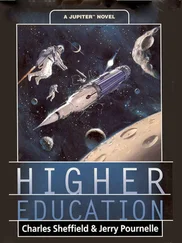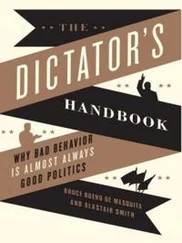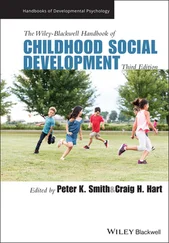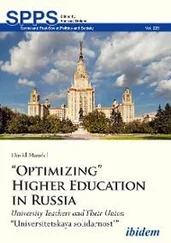One of the areas of challenges faced in the SSH project that was raised by several students related to communication and organization within the group. The formal curriculum can provide the space for explicit exploration of group roles and preferences (e.g. Belbin 2004) and group management and conflict techniques that students could draw on, both directly and indirectly, within informal curriculum projects.
Informal activist learning also takes place where activists learn “on the job” (Ollis 2008) whereby skills and knowledge are developed in the processes and practices of activism. Ollis (2008) describes how activist learning takes place through embodied and holistic practices, using the physical body and emotions to learn. Much traditional activism uses the body as part of protest (e.g. picket lines, locking one's body to objects) (Ollis 2008). It can be argued that the SSH also uses the body as part of this activism of the everyday, in the physical act of gardening or construction. This also forms an explicit part of the learning for some students:
As far as the students go, some of them had never even done anything outdoors like this. Some of them had never held a saw or a screwdriver or even attempted to knock two bits of wood together, let alone build a raised bed, and there was a lot of doubt and resistance to giving it a go.
(Student 2, Year 1 of project)
Engagement of the “head, heart, and hands” is seen as an effective and holistic approach to ESD, through engaging the cognitive, affective and practical dimensions of learning (Sipos et al. 2008; Mahmud 2017). This calls for maybe a greater degree of physical activity and action in the formal curriculum, a greater engagement of cognitive engagement in the informal curriculum, and ensuring the opportunities for students to act on their own affective domains in both formal and informal approaches.
2.6 The Relationships Between Staff and the Activist Learner
Staff involvement in the SSH project came from academic staff, university sustainability practitioners, and professional services staff such as the university grounds team and cleaning and accommodation services. Responsibilities from these teams lay around the upkeep and esthetics of the garden area, regular cleaning of the property, upkeep of the building, and adherence to regulations. Academic staff were involved initially in supporting the students in making the case to the university decision‐makers for the establishment of the project, working with the university sustainability practitioners who took over overseeing annual recruitment into the house, and providing a point of support and guidance.
Professional service teams were essential in making the project happen, in agreeing to the idea, finding a suitable property, and adjusting residence recruitment processes, as well as the regular maintenance associated with any university‐owned student residence on campus. However, there were also tensions around the roles and responsibilities of the students versus the professional services staff, including: decisions and responsibilities around the upkeep of the grounds; conflicts over the cleanliness of the house, exacerbated by the number of students (often with muddy boots) regularly using the property as a hub for student sustainability activity; the storage of materials students salvaged from waste found elsewhere on the campus, including blocking exit points; storage of bikes indoors; and behavioral complaints. Some of these tensions directly contravened university regulations. Observations over the years of the projects suggested that the student housemates in many ways appeared to believe themselves to be outside of such regulations, while the SSH is also more visible to accommodation staff due to its location close to their offices, further exacerbating tensions.
The students who initiated the project recognized the important role of the academic staff members in helping gain university support for the project. Having an established relationship with the academic staff, heightened by small cohort discussion‐based teaching, ensured that students had a staff contact that they felt they could approach. As academic staff, Robinson was able to negotiate the appropriate university decision‐making channels on behalf of the students, as well as provide reassurance to decision‐makers about the students involved. Without this staff support we feel it is unlikely that the project would have been sanctioned.
However, tensions arose due to the different expectations of academic staff and students and their different perspectives and ambitions for the project. For the staff, this was an exciting, innovative student‐led project which provided interesting research potential, and received external funding to support research into the pedagogy surrounding the project, as well as profile and publicity for sustainability initiatives at the university and the degree programs linked to the project. For the students, this was their university living experience and their personal lives. These tensions led rapidly to a more hands‐off approach, allowing the project to be entirely student directed, with staff being available for guidance. Academic staff also became an avenue for additional communication, acting as enforcer and mediator, between professional services and students, where the student behavior was deemed unacceptable by professional services. In later years, university sustainability practitioners replaced academic staff in providing support for the students and the connection to the relevant university professional services. They also asked students how they wanted support throughout the year, which varied with each set of housemates from monthly or once‐a‐semester meetings to ad hoc support through a Facebook group chat when students had specific questions. The role of the sustainability practitioner removed the direct connection between academic staff with official responsibilities toward students through teaching and credit‐bearing assessment, and the students' personal time and space. What can we learn from these experiences of relevance to supporting student activism more generally?
Projects that span the formal and informal curriculum can sit in an awkward space where both staff and student identities become blurred, expectations diverge, and the locus of control and self‐determination shifts. Such projects span both the public and private spheres of student life. This caused several challenges. For the sustainability practitioner staff, who had a more informal relationship with students, were uncomfortable with how much of their personal lives students disclosed to them. Tensions also arose as a result of staff seeing university benefit for the project, and therefore tried to bring the students' private sphere into the public sphere through more direct control over the project, enforcing traditional staff–student power hierarchies, but within the students' private space. Although as an academic member of staff we may look on and see the lost potential of elements of the project, it should be remembered that this is student‐led, that it is in their own private sphere into which we must be invited and onto which we cannot impose. Therefore, we must co‐create the project expectations with students rather than impose our expectations, and ultimately be sensitive to their lives as students.
Staff support can clearly be important in a number of ways, including negotiating institutional structures and power dynamics, and advocating on behalf of students where others in the university may be cautious about student‐led initiatives. Brinkman and Hirsch (2019) found that successful student advocacy projects involved staff from an early stage, providing continued mentoring and access to resources and social capital that a student might not have. Additionally, permanent staff may make it easier to help keep long‐range projects going beyond the length of any individual student's time at university (Brinkman and Hirsch 2019; Laycock Pedersen et al. 2019). Ludlow (2010) describes how staff support can help unpick problematic issues of academic accuracy in student's work before it is more widely disseminated. Ludlow (2010) also highlights the risks that are required of activism, the potential challenge that comes with activism, and hence the need for mechanisms of clear accountability and avenues through which the intended audience can feed back. While in some ways it may be recommended that an academic member of staff takes on this role, particularly where activism is situated as part of formal curriculum activities, Ludlow (2010) discusses the dangers of staff seeing themselves as “protectors” of the students and the reinforcement of hierarchies that activist learning may seek to challenge.
Читать дальше












